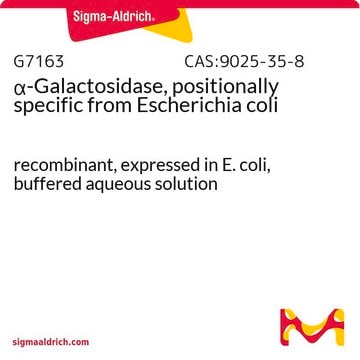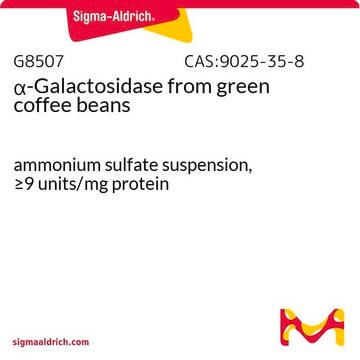G7673
α-Galactosidase I, Alkaline from Cucumis melo
Sinónimos:
α-D-Galactoside Galactohydrolase, Melibiase
About This Item
Productos recomendados
recombinant
expressed in E. coli
assay
≥85% (SDS-PAGE)
form
lyophilized solid
specific activity
≥20 units/mg protein
mol wt
apparent mol wt ~84 kDa by SDS-PAGE
shipped in
wet ice
storage temp.
−20°C
General description
Application
Biochem/physiol Actions
Physical properties
Unit Definition
Physical form
signalword
Warning
hcodes
Hazard Classifications
Eye Irrit. 2 - Skin Irrit. 2 - STOT SE 3
target_organs
Respiratory system
Storage Class
11 - Combustible Solids
wgk_germany
WGK 3
flash_point_f
Not applicable
flash_point_c
Not applicable
Certificados de análisis (COA)
Busque Certificados de análisis (COA) introduciendo el número de lote del producto. Los números de lote se encuentran en la etiqueta del producto después de las palabras «Lot» o «Batch»
¿Ya tiene este producto?
Encuentre la documentación para los productos que ha comprado recientemente en la Biblioteca de documentos.
Nuestro equipo de científicos tiene experiencia en todas las áreas de investigación: Ciencias de la vida, Ciencia de los materiales, Síntesis química, Cromatografía, Analítica y muchas otras.
Póngase en contacto con el Servicio técnico








